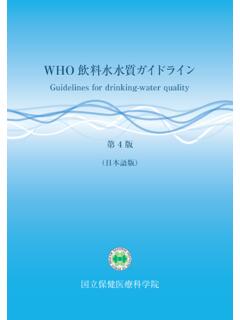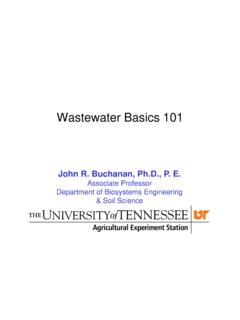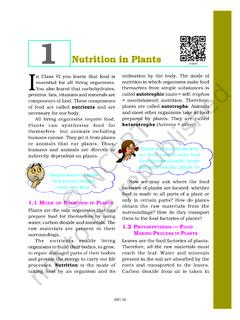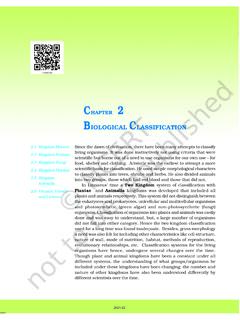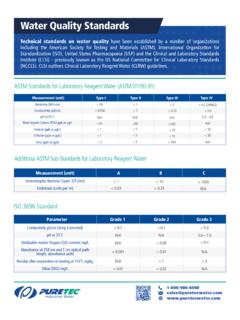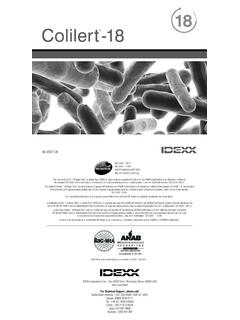Transcription of Heterotrophic Plate Counts and Drinking-water Safety
1 Heterotrophic Plate Counts and Drinking-water SafetyThe Significance of HPCs for Water Quality and Human Health Heterotrophic Plate Counts and Drinking-water Safety The Significance of HPCs for Water Quality and Human Health Edited by J. Bartram, J. Cotruvo, M. Exner, C. Fricker, A. Glasmacher Published on behalf of the World Health Organization by IWA Publishing, Alliance House, 12 Caxton Street, London SW1H 0QS, UK Telephone: +44 (0) 20 7654 5500; Fax: +44 (0) 20 7654 5555; Email: First published 2003 World Health Organization 2003 Printed by TJ International (Ltd), Padstow, Cornwall, UK Apart from any fair dealing for the purposes of research or private study, or criticism or review, as permitted under the UK Copyright, Designs and Patents Act (1998), no part of this publication may be reproduced, stored or transmitted in any form or by any means, without the prior permission in writing of the publisher, or, in the case of photographic reproduction, in accordance with the terms of licences issued by the Copyright Licensing Agency in the UK, or in accordance with the terms of licenses issued by the appropriate reproduction rights organization outside the UK.
2 Enquiries concerning reproduction outside the terms stated here should be sent to IWA Publishing at the address printed above. The publisher makes no representation, express or implied, with regard to the accuracy of the information contained in this book and cannot accept any legal responsibility or liability for errors or omissions that may be made. Disclaimer The opinions expressed in this publication are those of the authors and do not necessarily reflect the views or policies of the International Water Association, NSF International, or the World Health Organization. IWA, NSF International, WHO and the editors will not accept responsibility for any loss or damage suffered by any person acting or refraining from acting upon any material contained in this publication. In addition, the mention of specific manufacturers products does not imply that they are endorsed or recommended in preference to others of a similar nature that are not mentioned.
3 Errors and omissions excepted, the names of proprietary products are distinguished by initial capital letters. British Library Cataloguing-in-Publication Data A CIP catalogue record for this book is available from the British Library Library of Congress Cataloging-in-Publication Data A catalog record for this book is available from the Library of Congress ISBN: 1 84339 025 6 (IWA Publishing) ISBN: 92 4 156226 9 (WHO) ContentsForewordviiAcknowledgementsixLis t of acronyms and abbreviationsxiRobert Koch xiv 1 Expert consensus Expert Meeting Group Report12 Public health aspects of the role of HPC an introduction M. Exner, V. Vacata and J. Gebel 123 The history and use of HPC in Drinking-water quality management P. Payment, Sartory and Reasoner 204 The presence of bacteria in water after regrowth Fricker 495 Bacteria of potential health concern Lightfoot 616 Relationships between common water bacteria and pathogens in Drinking-water H.
4 Leclerc 807 Epidemiological and risk assessment evidence of disease linked to HPC Bacteria Hunter 119 vi HPC and Drinking-water Safety 8 Infections from HPC organisms in Drinking-water amongst the Immunocompromised A. Glasmacher, S. Engelhart and M. Exner 137 9 Methods to identify and enumerate frank and opportunistic bacterial pathogens in water and biofilms Ashbolt 146 10 Conditions favouring coliform and HPC bacterial growth in Drinking-water and on water contact surfaces LeChevallier 177 11 Managing regrowth in Drinking-water distribution systems D. van der Kooij 199 12 The role of HPC in managing the treatment and distribution of Drinking-water W. Robertson and T. Brooks233 Index 245 ForewordThis monograph examines the appropriate role of the Heterotrophic Plate count (HPC) measurement in Drinking-water quality management.
5 It was developed from a two-day workshop attended by a group of microbiology and public health experts, including those with regulatory and medical expertise, convened by the World Health Organization and NSF International (WHO Collaborating Centre for Drinking Water Safety and Treatment) in Geneva, Switzerland, on 25 26 April 2002. The workshop followed immediately after the International Symposium on HPC Bacteria in Drinking Water Public Health Implications?, developed by the same organizations. The Session Chairs and other selected participants in the symposium assembled in the workshop to address the issues that led to the formulation of the symposium and to provide a consensus report and conclusions to assist public health officials to interpret the information provided by HPC measurements. The issues that were addressed include: the relationship between HPC in Drinking-water systems (including those derived from in-line treatment systems, dispensers and bottled water) and health risks for the general public; viii HPC and Drinking-water Safety the role of HPC as an indirect indicator or index for pathogens of concern in Drinking-water ; the role of HPC in assessing the efficacy and proper functioning of water treatment and supply/distribution processes; and the relationship between HPC and the aesthetic acceptability of Drinking-water .
6 This report deals with safe water supply extending from source to consumer, including plumbed-in devices, domestic and building environments, and water supplied in bottles or packages. The different ways in which Drinking-water may be used in the home are considered, and specific concerns in higher-risk settings and populations at increased risk are addressed. The Expert Meeting, supported by the papers in this monograph, addressed that debate as to the need, utility or quantitative basis for health-based standards or guidelines relating to HPC-measured growth in Drinking-water and provided their consensus conclusions in the Meeting Report (chapter 1). Each chapter was originally the lead presentation in each session of the symposium. Each was revised in light of the other presented papers, the debates and discussions, and the Expert Meeting deliberations to reflect the scientific information that was presented and the collective experiences of the members.
7 This report is the product of the Expert Meeting; its chapters were peer reviewed by members of the expert group and the editors. We hope this document provides useful information and perspective on the utility and the limitations of HPC data in the management and operation of piped water systems, as well as other means of providing Drinking-water to the public. J. Bartram Cotruvo M. Exner Fricker A. Glasmacher AcknowledgementsThe World Health Organization wishes to express its appreciation to all those whose efforts made the production of this book possible. The international group of experts and observers who attended the meeting on HPC measurement in Geneva, Switzerland, in April 2002, many of whom contributed to individual chapters in this book, comprised the following: Martin Allen, AWWA Research Foundation, Denver, CO, USA Nicholas Ashbolt, University of New South Wales, Sydney, Australia Jamie Bartram, WHO, Geneva, Switzerland Lucia Bonadonna, Istituto Superiore Di Sanita, Rome, Italy Keri Broughton, NSF International, Ann Arbor, MI, USA (administrative support)Joseph Cotruvo, J.
8 Cotruvo & Associates, Washington, DC, USA David Cunliffe, Department of Human Services, Adelaide, Australia Chrissie De Wet, Rand Water, Vereenigine, South Africa Al Dufour, US Environmental Protection Agency, Cincinnati, OH, USA Stephen Edberg, Yale University School of Medicine, New Haven, CT, USA Takuro Endo, National Institute of Infectious Diseases, Tokyo, Japan Martin Exner, Institute of Hygiene and Public Health, Bonn, Germany xHPC and Drinking-water Safety Janice Freytag, NSF International, Ann Arbor, MI, USA (administrative support)Colin Fricker, CRF Consulting, Reading, United Kingdom Charles Gerba, University of Arizona, Tucson, AZ, USA Axel Glasmacher, University of Bonn, Bonn, Germany Stan Hazan, NSF International, Ann Arbor, MI, USA (administrative support)Paul Hunter, University of East Anglia, Norwich, United Kingdom Mark LeChevallier, American Water Works Service Company, Voorhees, NJ, USA Henri Leclerc, Facult de M decine de Lille, Lille, France Nigel Lightfoot, PHLS North, New Castle Upon Tyne, United Kingdom Yasumoto Magara, Hokkaido University, Sapporo, Japan Annick Moreau, Danone Water Technology Centre, Evian, France David Mossel, Eijkman Foundation for Public Health, Utrecht University, Utrecht, The Netherlands Dominique Olivier, Vivendi Water, Saint Maurice, France Pierre Payment, INRS-Institut Armand-Frappier, Laval, Quebec, Canada Donald Reasoner, US Environmental Protection Agency, Cincinnati, OH, USA Will Robertson, Health Canada, Ottawa, Ontario, Canada David Sartory, Severn Trent Water, Shrewsbury, United Kingdom Ralph Schubert, Institute of Hygiene and Environmental Health, Frankfurt am Main, Germany Melita Stevens, Melbourne Water, Melbourne.
9 Australia Corry B. Struyk, Eijkman Foundation for Public Health, Utrecht University, Utrecht, The Netherlands Dick van der Kooij, Kiwa NV Water Research, Nieuwegein, The Netherlands We acknowledge and appreciate the efforts of all of the expert group members and authors, and we thank the sponsors the US Environmental Protection Agency, Health Canada, US Centers for Disease Control and Prevention, and the American Water Works Association Research Foundation without whom this work would not have been possible. List of acronyms and abbreviations AFLP amplified fragment length polymorphism AIDS acquired immunodeficiency syndrome ANSI American National Standards Institute AOC assimilable organic carbon AP-PCR arbitrarily primed polymerase chain reaction ARDRA amplified ribosomal DNA restriction analysis ATP adenosine triphosphate BDOC biodegradable dissolved organic carbon BFR biofilm formation rate BOM biodegradable organic matter BOX-PCR high-stringency PCR assay targeting regions within various bacterial genomes and bordered by invertedly repeated elementsbp base pair BPP biomass production potential cDNA complementary or copy DNA cfu colony-forming units CI confidence interval CTC cyanoditolyl tetrazolium
10 Chloride xii HPC and Drinking-water Safety DGGE denaturing gradient gel electrophoresis DNA deoxyribonucleic acid DOC dissolved organic carbon EC European Community EEC European Economic Community EPA Environmental Protection Agency EU European Union FISH fluorescencein situ hybridizationGAC granular activated carbon HIV human immunodeficiency virus HPC Heterotrophic Plate count ICU intensive care unit IF immunofluorescence Ig immunoglobulin IMS immunomagnetic separation INT iodonitrotetrazoliumISO International Organization for Standardization LMW low molecular weight MAC Mycobacterium avium complex MDOD mean dissolved oxygen difference MLEE multilocus enzyme electrophoresis MLST multilocus sequence typing MRD Modified Robbins Device mRNA messenger RNA OR odds ratio PAI pathogenicity island PCR polymerase chain reaction PET polyethylene terephthalate PFGE pulsed field gel electrophoresis PNA peptide nucleic acid POE point-of-entry POU point-of-use PVC polyvinyl chloride QMRA quantitative microbial risk assessment RAPD random amplified polymorphic DNA rDNA ribosomal DNA RFLP restriction fragment length polymorphism RNA ribonucleic acid rRNA ribosomal RNA SIV simian immunodeficiency virus SPC standard Plate count List of acronyms and abbreviations xiii SSCP single-strand










